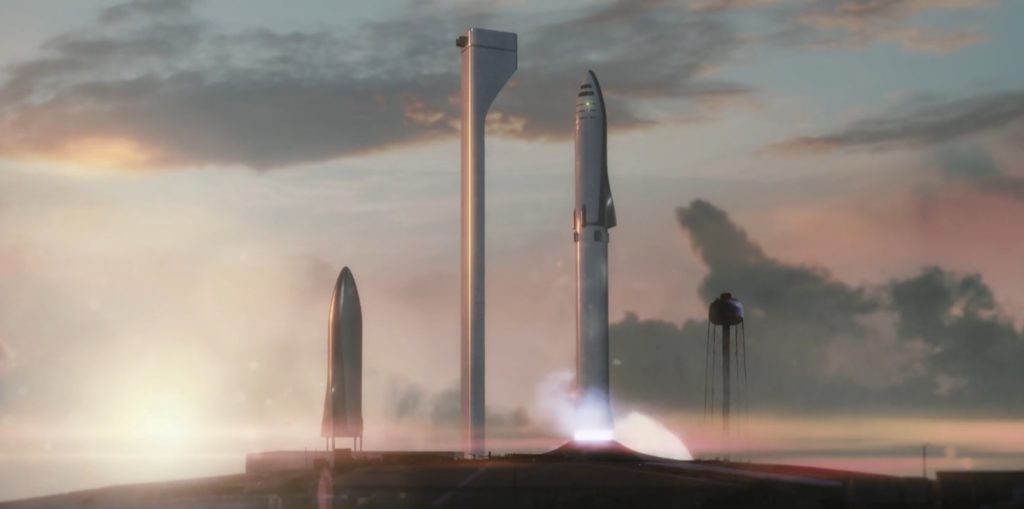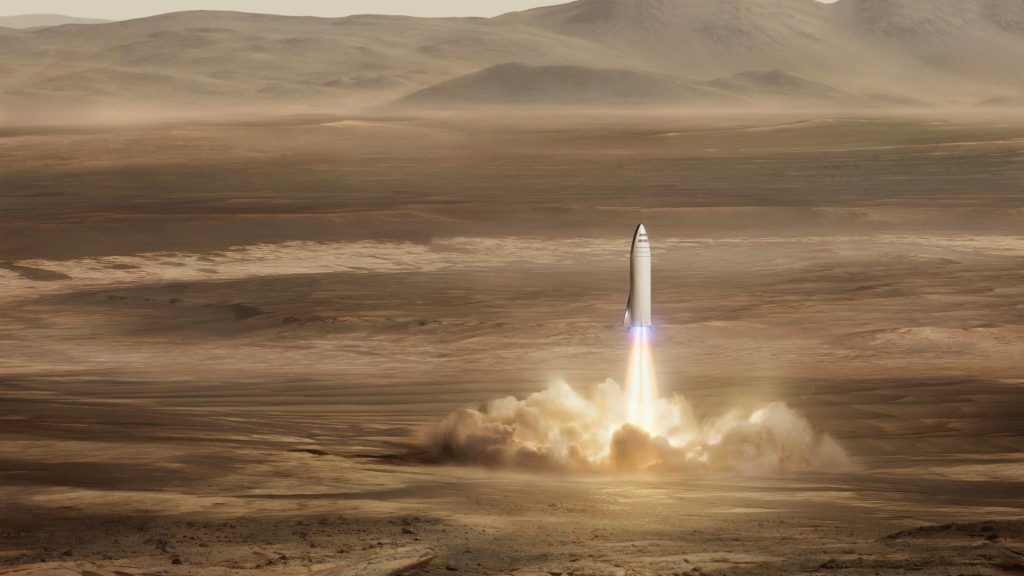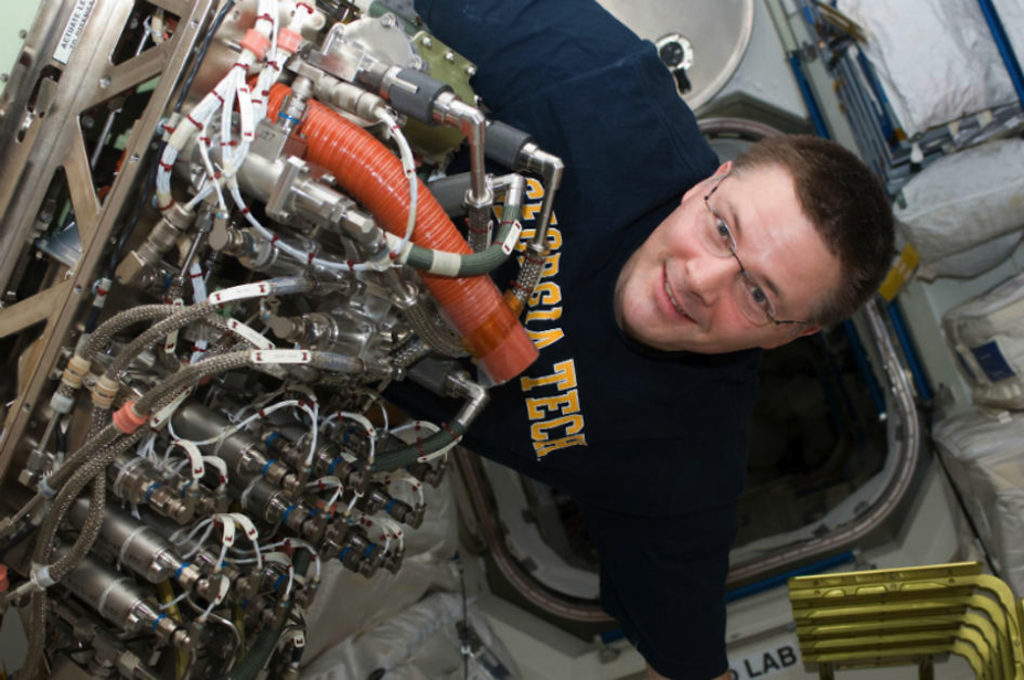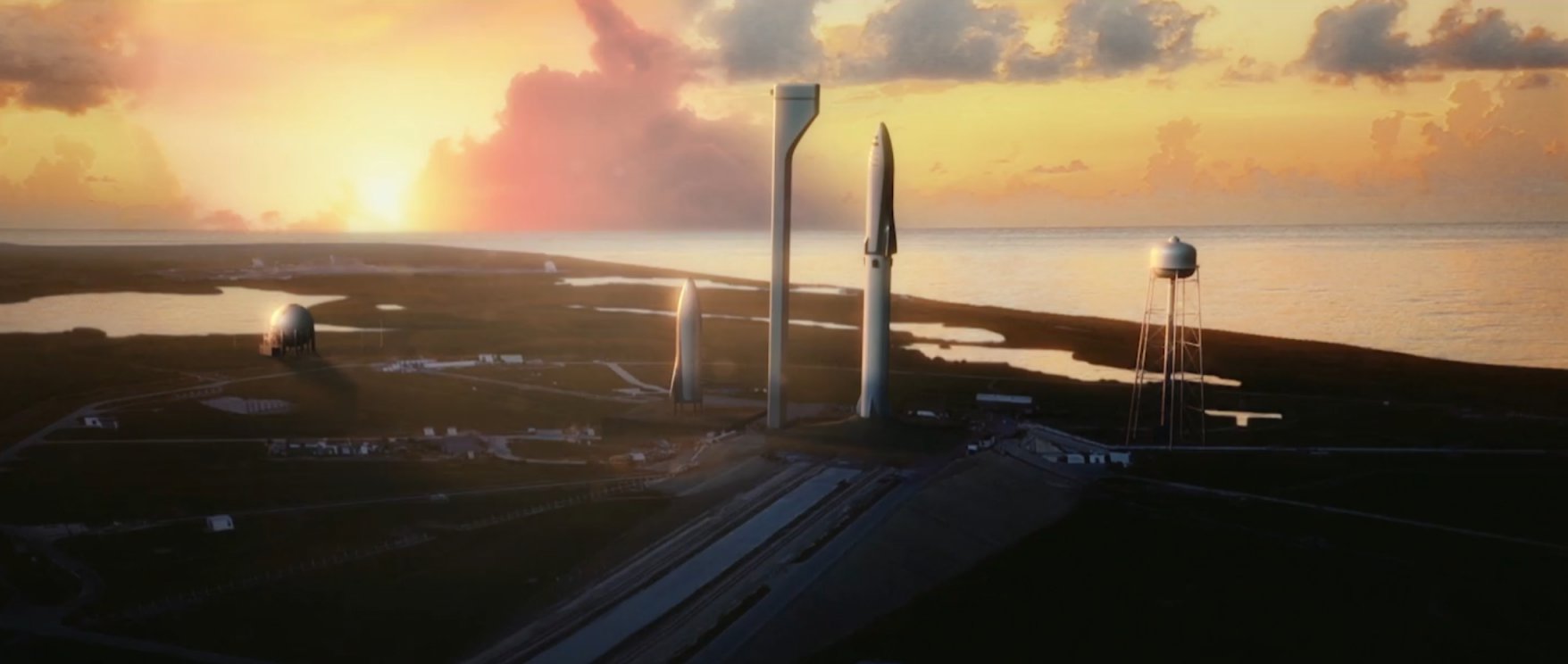
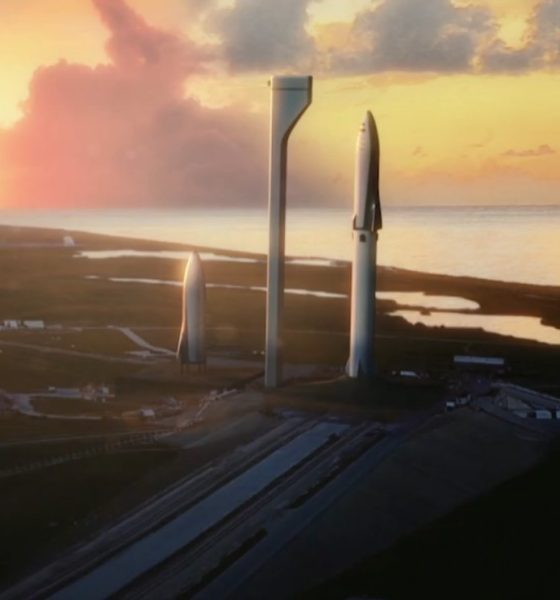
News
SpaceX’s Elon Musk teases in-house R&D for BFR refueling on Mars
SpaceX CEO Elon Musk took to Twitter to reaffirm SpaceX’s commitment to developing their own technology for refueling BFR beyond Earth, noting that the high-efficiency hardware would be “critical for propellant production at Mars Base Alpha.”
Known as in-situ resource utilization (ISRU), Musk briefly commented on SpaceX’s in-house work on the tech in an October 2017 Reddit AMA (Ask Me Anything), noting that “Design is pretty far along…it’s a key part of the whole system.” His most recent tweet on June 10 reiterated ISRU’s centrality to any successful (read: sustainable) colonization of Mars, and the CEO further confirmed what was already all but guaranteed, describing a chemical reaction known as the Sabatier process.
“SpaceX is already developing high-efficiency CO2 capture with H2O to form liquid CH4 (methane) & O2.” – Elon Musk, June 2018
At the most basic level, by combining heated, high-pressure carbon dioxide and hydrogen (easily derived from Mars’ CO2-rich atmosphere and wealth of water ice) and a bed of nickel or aluminum oxide, the Sabatier process can produce methane and water. Water can be easily decomposed into hydrogen and oxygen or used for drinking, cooking, and plumbing, among an infinite number of other uses. Akin to a more advanced version of what is already successfully utilized aboard the International Space Station, efficient Sabatier reactors can also be used to partially recycle wastewater and carbon dioxide (produced by humans breathing) to recover a significant fraction of pure water and methane.
In the case of SpaceX’s BFR rocket and spaceship, its propellant of choice will be liquid oxygen and methane (known as methalox) partly because of how comparatively easy it is to handle methane and to produce it on Mars, while simultaneously being a significant enabler of efficient long-term crewed spaceflight (i.e. the months-long deep space journeys to and from Mars). Less consumable mass required to keep passengers alive and happy directly translates into more payload to the surface of Mars, lowering the overall cost per kilogram delivered and thus the cost per ticket!
- The BFR spaceship pictured landing on Mars. (SpaceX)
- A US astronaut completes installation of the ISS’s upgraded Sabatier reactor, which helps to partially close the loop on water consumables. (NASA, 2011)
After landing on Mars, Sabatier reactors would be used to gradually refuel each Big F. Spaceship. Of course, the Sabatier process follows the laws of thermodynamics and thus requires a power source to heat the inputs, as well as cool the outputted methane and oxygen into fuel-grade cryo-cooled liquids. At least until SpaceX chooses to jump into the ring with the US nuclear (fissile) material regulation apparatus and develop or launch nuclear reactors, the most reliable power source for interplanetary colonization, that power will have to be supplied by acres upon acres of solar panels optimized to be as light, dense, and efficient as possible. If anything, the dust storm currently threatening the livelihood of Mars rover Opportunity should serve as evidence that solar power on Mars is at best a relatively cheap and simple stopgap for better power sources, especially for any long-term human presence on the Red Planet.
Optimally, BFS’ own internal solar array would (and likely will, at least at first) double as a source of power both in space and on the surface of Mars, neatly removing the need to waste precious cargo space on duplicate hardware. Even better, perhaps there is a chance that SpaceX’s materials scientists, engineers, and chemists can find ways to significantly optimize the Sabatier reaction for their specific needs, potentially lowering the energy required to get the desired end-product. It’s sort of a theme with interplanetary colonization, butttt… lower energy requirements translate to fewer solar panels needed to produce a given quantity of propellant in a set period of time, meaning that more payload can thus be dedicated to more important cargo like food, habitats, ISRU hardware, mining and tunneling machinery, and humans.
With any luck, followers of SpaceX may get an update on the company’s BFR plans later this year, likely just before or immediately after the first prototype spaceship is shipped to Texas for acceptance testing and a Grasshopper-style program of suborbital hops.
Follow us for live updates, peeks behind the scenes, and photos from Teslarati’s East and West coast photographers.
Teslarati – Instagram – Twitter
Tom Cross – Twitter
Pauline Acalin – Twitter
Eric Ralph – Twitter

News
Tesla China delivery centers look packed as 2025 comes to a close
Needless to say, it appears that Tesla China seems intent on ending 2025 on a strong note.

Tesla’s delivery centers in China seem to be absolutely packed as the final days of 2025 wind down, with photos on social media showing delivery locations being filled wall-to-wall with vehicles waiting for their new owners.
Needless to say, it appears that Tesla China seems intent on ending 2025 on a strong note.
Full delivery center hints at year-end demand surge
A recent image from a Chinese delivery center posted by industry watcher @Tslachan on X revealed rows upon rows of freshly prepared Model Y and Model 3 units, some of which were adorned with red bows and teddy bears. Some customers also seem to be looking over their vehicles with Tesla delivery staff.
The images hint at a strong year-end push to clear inventory and deliver as many vehicles as possible. Interestingly enough, several Model Y L vehicles could be seen in the photos, hinting at the demand for the extended wheelbase-six seat variant of the best-selling all-electric crossover.
Strong demand in China
Consumer demand for the Model Y and Model 3 in China seems to be quite notable. This could be inferred from the estimated delivery dates for the Model 3 and Model Y, which have been extended to February 2026 for several variants. Apart from this, the Model Y and Model 3 also continue to rank well in China’s premium EV segment.
From January to November alone, the Model Y took China’s number one spot in the RMB 200,000-RMB 300,000 segment for electric vehicles, selling 359,463 units. The Model 3 sedan took third place, selling 172,392. This is quite impressive considering that both the Model Y and Model 3 are still priced at a premium compared to some of their rivals, such as the Xiaomi SU7 and YU7.
With delivery centers in December being quite busy, it does seem like Tesla China will end the year on a strong note once more.
News
Tesla Giga Berlin draws “red line” over IG Metall union’s 35-hour week demands
Factory manager André Thierig has drawn a “red line” against reducing Giga Berlin’s workweek to 35 hours, while highlighting that Tesla has actually increased its workers’ salaries more substantially than other carmakers in the country.

Tesla Giga Berlin has found itself in a new labor dispute in Germany, where union IG Metall is pushing for adoption of a collective agreement to boost wages and implement changes, such as a 35-hour workweek.
In a comment, Giga Berlin manager André Thierig drew a “red line” against reducing Giga Berlin’s workweek to 35 hours, while highlighting that Tesla has actually increased its workers’ salaries more substantially than other carmakers in the country.
Tesla factory manager’s “red line”
Tesla Germany is expected to hold a works council election in 2026, which André Thierig considers very important. As per the Giga Berlin plant manager, Giga Berlin’s plant expansion plans might be put on hold if the election favors the union. He also spoke against some of the changes that IG Metall is seeking to implement in the factory, like a 35-hour week, as noted in an rbb24 report.
“The discussion about a 35-hour week is a red line for me. We will not cross it,” Theirig said.
“(The election) will determine whether we can continue our successful path in the future in an independent, flexible, and unbureaucratic manner. Personally, I cannot imagine that the decision-makers in the USA will continue to push ahead with the factory expansion if the election results favor IG Metall.”
Giga Berlin’s wage increase
IG Metall district manager Jan Otto told the German news agency DPA that without a collective agreement, Tesla’s wages remain significantly below levels at other German car factories. He noted the company excuses this by referencing its lowest pay grade, but added: “The two lowest pay grades are not even used in car factories.”
In response, Tesla noted that it has raised the wages of Gigafactory Berlin’s workers more than their German competitors. Thierig noted that with a collective agreement, Giga Berlin’s workers would have seen a 2% wage increase this year. But thanks to Tesla not being unionized, Gigafactory Berlin workers were able to receive a 4% increase, as noted in a CarUp report.
“There was a wage increase of 2% this year in the current collective agreement. Because we are in a different economic situation than the industry as a whole, we were able to double the wages – by 4%. Since production started, this corresponds to a wage increase of more than 25% in less than four years,” Thierig stated.
News
Tesla is seeing a lot of momentum from young Koreans in their 20s-30s: report
From January to November, young buyers purchased over 21,000 Teslas, putting it far ahead of fellow imported rivals like BMW and Mercedes-Benz.

Tesla has captured the hearts of South Korea’s 20s-30s demographic, emerging as the group’s top-selling imported car brand in 2025. From January to November, young buyers purchased over 21,000 Teslas, putting it far ahead of fellow imported rivals like BMW and Mercedes-Benz.
Industry experts cited by The Economist attributed this “Tesla frenzy” to fandom culture, where buyers prioritize the brand over traditional car attributes, similar to snapping up the latest iPhone.
Model Y dominates among young buyers
Data from the Korea Imported Automobile Association showed that Tesla sold 21,757 vehicles to the 20s-30s demographic through November, compared to BMW’s 13,666 and Mercedes-Benz’s 6,983. The Model Y led the list overwhelmingly, with variants like the standard and Long Range models topping purchases for both young men and women.
Young men bought around 16,000 Teslas, mostly Model Y (over 15,000 units), followed by Model 3. Young women followed a similar pattern, favoring Model Y (3,888 units) and Model 3 (1,083 units). The Cybertruck saw minimal sales in this group.
The Model Y’s appeal lies in its family-friendly SUV design, 400-500 km range, quick acceleration, and spacious cargo, which is ideal for commuting and leisure. The Model 3, on the other hand, serves as an accessible entry point with lower pricing, which is valuable considering the country’s EV subsidies.
The Tesla boom
Experts described Tesla’s popularity as “fandom culture,” where young buyers embrace the brand despite criticisms from skeptics. Professor Lee Ho-geun called Tesla a “typical early adopter brand,” comparing purchases to iPhones.
Professor Kim Pil-soo noted that young people view Tesla more as a gadget than a car, and they are likely drawn by marketing, subsidies, and perceived value. They also tend to overlook news of numerous recalls, which are mostly over-the-air software updates, and controversies tied to the company.
Tesla’s position as Korea’s top import for 2025 seems secured. As noted by the publication, Tesla’s December sales figures have not been reported yet, but market analysts have suggested that Tesla has all but secured the top spot among the country’s imported cars this year.
